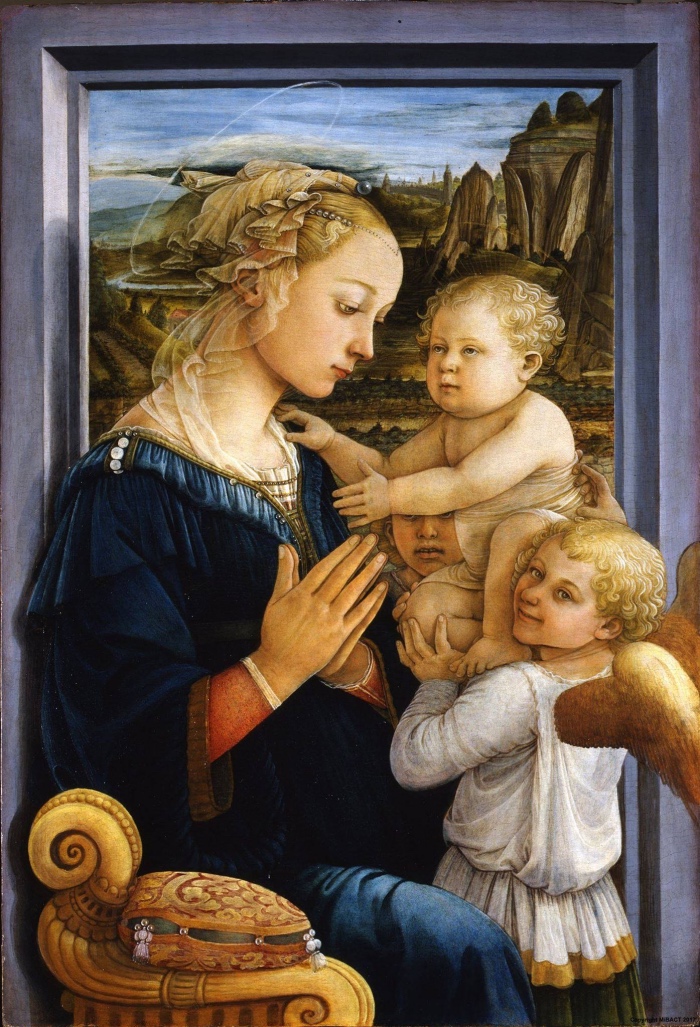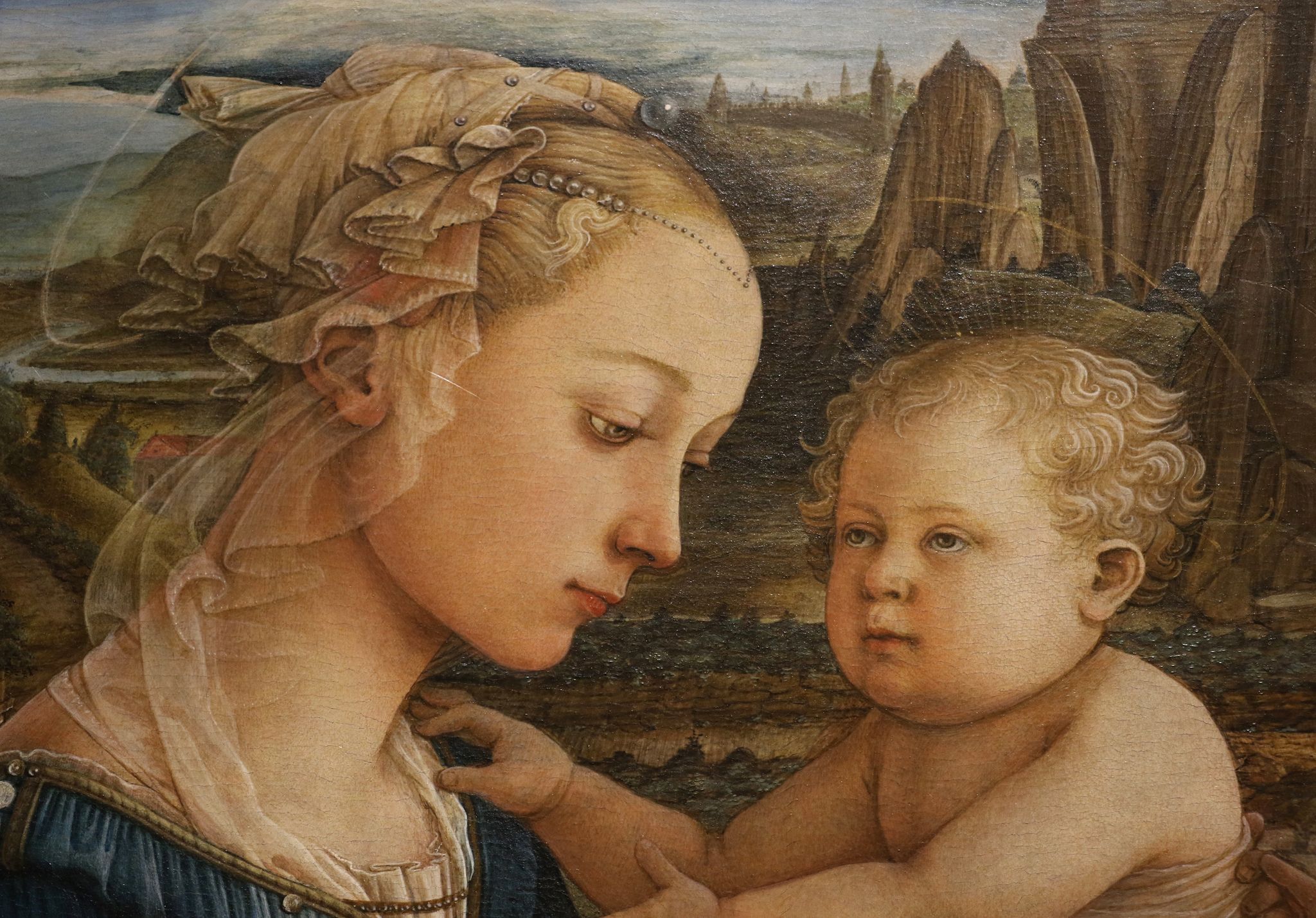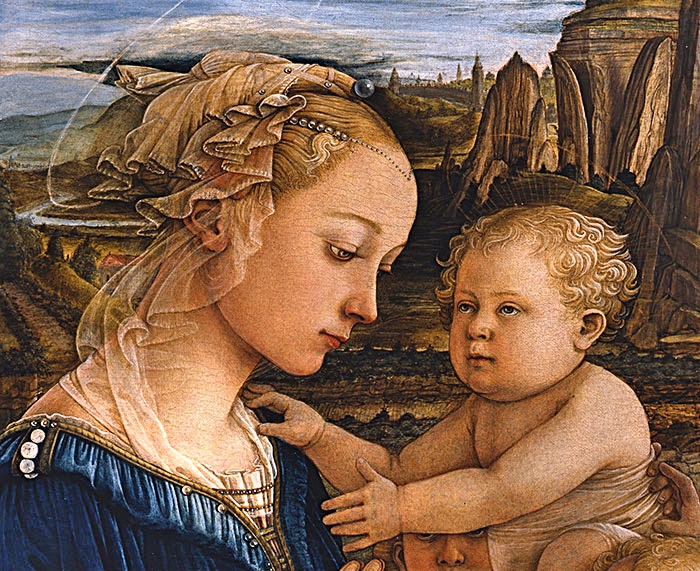
Have you ever contemplated the work imbued with deep humanity and beauty by Filippo Lippi, the famous Madonna and Child with Two Angels?
In this post, I will take you on a journey to discover one of the most famous and iconic works of art of the Renaissance: Filippo Lippi’s Madonna and Child with Two Angels. This artistic masterpiece captures our attention with its spontaneity and extraordinary representation, conveying emotions and meanings that have spanned the centuries.
The Madonna and Child with Two Angels by Filippo Lippi: a glimpse into Renaissance art

At the heart of Filippo Lippi’s most delicate work is the tender depiction of the Madonna, seated on a throne adorned with embroidered and carved details. Her gaze is turned towards her son Jesus in a gesture of prayer, conveying sweetness, indulgence and a shadow of melancholy. Filippo Lippi seems to capture an intimate and meaningful moment, almost as if the mother were glimpsing the painful future of her beloved child.
DESCRIPTION OF THE MADONNA WITH CHILD AND TWO ANGELS BY FILIPPO LIPPI
Filippo Lippi’s Madonna and Child with Two Angels is an extraordinary example of how art can capture moments of intimacy and spirituality, immortalising emotions and relationships in a single painting.
The composition shows the Madonna, a central figure of devotion, with the Child Jesus and two angels. The attention to detail is stunning: from the folds of the robes that fit the body to the vivid and penetrating expressions of the faces, every aspect of the work reveals Filippo Lippi’s technical skill and narrative artistry.
Lippi uses light and shadow to create depth and realism, bringing the figures and their world to life. The delicacy with which the Madonna looks at her son, with a mixture of maternal joy and understanding, captures the essence of motherhood and spirituality. The two angels, one of them smiling and engaging, add a celestial and playful dimension to the work, contrasting with the barely perceptible melancholy in the Madonna’s eyes.
The ornate throne and the window opening onto a serene landscape reveal Lippi’s mastery in combining nature and sacredness. The painting, part of the Uffizi collection of works, conveys a sense of harmony and balance, not only between the human and divine figures, but also between the earthly and heavenly elements. The subtle haloes surrounding the heads of the figures add a touch of spirituality without obscuring the scene, allowing the viewer to fully immerse themselves in the world depicted.
ANALYSIS OF THE MADONNA WITH CHILD AND TWO ANGELS BY FILIPPO LIPPI
Jesus, wrapped only in swaddling clothes, responds with an expression that reflects the love and connection between mother and son. Extending his arms towards Mary, he seems to seek comfort and security in her loving arms. This depiction embodies the deep humanity that characterises many Renaissance works of art, capturing a moment of intimacy and devotion.
Filippo Lippi’s work captures the attention not only through the central figures, but also through the surrounding details. One of the two angels holding Jesus smiles, engaging the viewer and creating a direct link between the work and the viewer.
The setting opens onto a varied landscape, with views of the sea, rocks, vegetation and buildings, adding a touch of nature and spatiality to the scene.
INFLUENCE, LEGACY AND CURIOSITIES OF A MASTERPIECE
The sacred image of the Madonna and Child with Two Angels by Filippo Lippi, now on display in the Uffizi Gallery in Florence, has had a lasting impact on art.
Its well-balanced composition and attention to detail inspired numerous artists of the Renaissance and later centuries, including the young Botticelli. This work represents a bridge between generations of artists, a silent witness to the artistic influences that have been passed down through the ages.
While we admire this artistic marvel, we still find ourselves investigating the identity of the Madonna depicted. The hypothesis that she might be Lucrezia Buti, the young nun who became Filippo Lippi’s wife, has yet to be confirmed. This mystery adds an aura of fascination to the work, inviting us to continue investigating its origin and history.
The first certain and documented information dates back to the 18th century, when the work was in the Medici Villa of Poggio Imperiale in Florence. This fact suggests that even at that time, the work was recognised as an artistic jewel of great value.

Raffaello, Madonna del Cardellino
Filippo Lippi’s Madonna and Child with Two Angels is more than just a painting.
It is a bridge connecting the past to the present, a window through which we can look into the human soul and its deepest emotions.
As we admire this work, we immerse ourselves in a world of beauty, devotion and mystery, celebrating the creative genius of Filippo Lippi and the lasting impact of his art.

